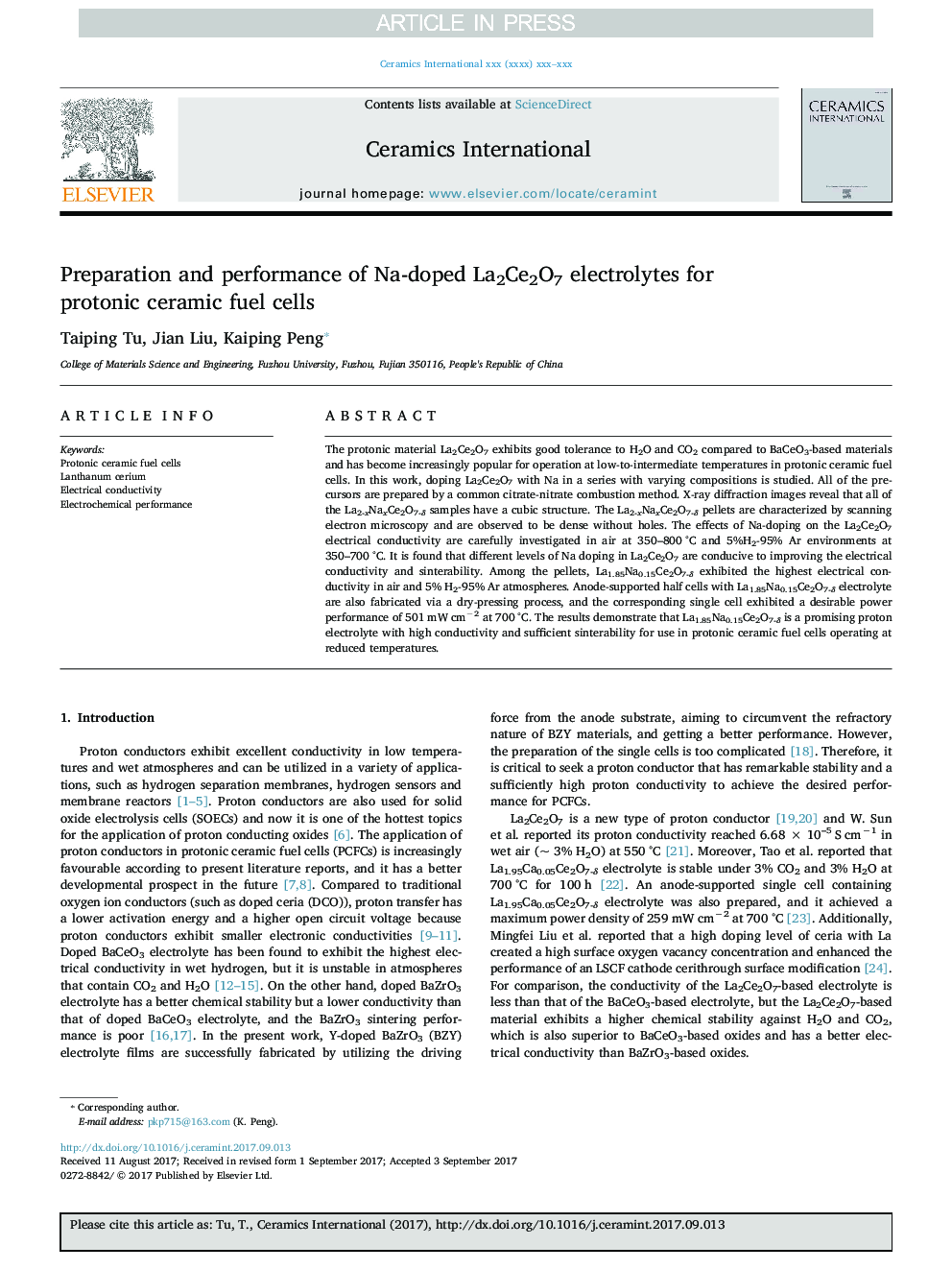| Article ID | Journal | Published Year | Pages | File Type |
|---|---|---|---|---|
| 5437273 | Ceramics International | 2017 | 7 Pages |
Abstract
The protonic material La2Ce2O7 exhibits good tolerance to H2O and CO2 compared to BaCeO3-based materials and has become increasingly popular for operation at low-to-intermediate temperatures in protonic ceramic fuel cells. In this work, doping La2Ce2O7 with Na in a series with varying compositions is studied. All of the precursors are prepared by a common citrate-nitrate combustion method. X-ray diffraction images reveal that all of the La2-xNaxCe2O7-δ samples have a cubic structure. The La2-xNaxCe2O7-δ pellets are characterized by scanning electron microscopy and are observed to be dense without holes. The effects of Na-doping on the La2Ce2O7 electrical conductivity are carefully investigated in air at 350-800 °C and 5%H2-95% Ar environments at 350-700 °C. It is found that different levels of Na doping in La2Ce2O7 are conducive to improving the electrical conductivity and sinterability. Among the pellets, La1.85Na0.15Ce2O7-δ exhibited the highest electrical conductivity in air and 5% H2-95% Ar atmospheres. Anode-supported half cells with La1.85Na0.15Ce2O7-δ electrolyte are also fabricated via a dry-pressing process, and the corresponding single cell exhibited a desirable power performance of 501 mW cmâ2 at 700 °C. The results demonstrate that La1.85Na0.15Ce2O7-δ is a promising proton electrolyte with high conductivity and sufficient sinterability for use in protonic ceramic fuel cells operating at reduced temperatures.
Related Topics
Physical Sciences and Engineering
Materials Science
Ceramics and Composites
Authors
Taiping Tu, Jian Liu, Kaiping Peng,
